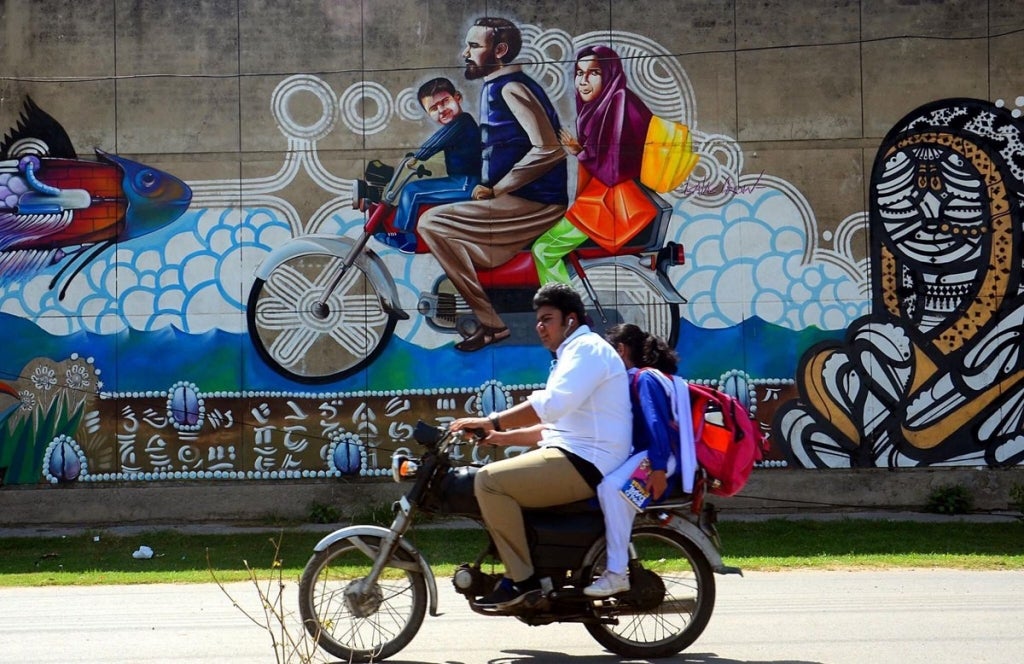 A boy studying in Sindh, Pakistan. Photo - razum / Shutterstock.com
A boy studying in Sindh, Pakistan. Photo - razum / Shutterstock.com
It was a tough time for Abdul and his family, when schools in Pakistan were forced to close due to COVID-19. The family was not able to access remote learning opportunities and did not have any books for the children. They waited anxiously for schools to reopen, concerned the children would forget what they had learned. “We feel so relieved now that schools are open again,” says Abdul., “It’s because we are concerned about their education.”
It is indeed wonderful to see pictures of children going back to school in Pakistan - eyes filled with eagerness to learn, and faces beaming with the excitement of reuniting with friends. For a moment, one forgets the hardships so many families have experienced over the last seven months.
This sudden visibility of schooling stands in stark contrast with the invisibility of the crisis that quietly grew in homes when schools were shut. That is the learning crisis, which is now beginning to reveal itself to the country’s teachers, policymakers and development partners.
We have spent the last seven months thinking about the learning loss that has accumulated in Pakistan and, indeed, around the world, and now have first estimates on the impacts in Pakistan. We also directly track how the crisis affects schools and families, on which we expect to report soon.
Close to a million students may not come back to school, as a result of economic hardships experienced by their families.

The visible and invisible elements of Pakistan’s learning crisis
The 2020 Human Capital Index showed that Pakistan had improved its Learning Adjusted Years of Schooling from 4.8 years to 5.1 years over the last few years. But these gains may have been lost already.
We expect that the four months of school closures during the pandemic could reduce Learning Adjusted Years of Schooling for Pakistan back to 4.8 years. We also estimate that 79 percent of children will not learn to read by age 10, up from 75 percent last year. Remote learning has not been able to make up for this long-standing deficit. This is a setback to years of reform efforts.
Another deeply concerning finding is that close to a million students may not come back to school as a result of economic hardships experienced by their families. This is the visible impact of the pandemic - an empty seat or two in every classroom, while the other seats are filled with children struggling to keep up. In our models, Pakistan will lose a larger share of students from the school system than any other country.

These numbers could be much worse than we predict. During early summer, 54 percent of families in Pakistan reported an income loss, with many families losing jobs and experiencing hunger. If these effects have persisted, we may see many more empty seats, particularly among older children forced to leave school to generate income for households. Families unable to afford fees may be forced to withdraw their children from schooling, which could have substantial effects on the private school supply.
How can families be convinced to send their children back to school? What will teachers do to recoup the learning loss once children are back in the classroom? How can the government support these endeavors for every one of Pakistan’s 65 million school-aged children? There is a long chain of actions that need to be taken between preparing a plan for what students should learn, to changing what teachers do in the classroom, to students actually learning something from those exchanges.
Several initiatives such as accelerated learning programs, enrollment campaigns and remote learning programs are under way. But our overwhelming sense is that much more needs to be done to combat learning losses at the required scale.

A much larger effort is needed to resolve this crisis
We calculate that Pakistan’s economy stands to lose between $67 -155 billion if learning losses are as large as we predict. These numbers are not some abstraction. This economic loss is equivalent to government spending on education in the past two to five years. Reopening schools is an important step to remedy this crisis, as families like Abdul’s will testify. But we cannot afford to underestimate the size of the longer term problem, as we should have also learned from earlier crises like the 2005 earthquake.
The government will need to engage in extensive re-enrollment campaigns or expand existing stipend programs to ensure that the most vulnerable children do not drop out permanently from school. Rapid assessments of what children know early on as schools reopen will help arm policymakers and teachers with the knowledge they need to course-correct in the face of an evolving situation. Similarly, continuing to inform parents and students about support available for learning can help increase engagement with schooling.
A collective effort from government, civil society, teachers, parents and students themselves will be needed to help Pakistan’s children overcome this crisis. It is heartening to see the coalition of organizations behind Teleschool, the remote learning initiative that is reaching millions of children. We also see the commitment of the political leadership from the government at various levels, the agility of the private sector school networks, and the untiring initiatives of civil society organizations. This shared sense of purpose was sorely missing from the education landscape of the last few decades.
Now is the time to invest more and better – not less – in the children of Pakistan and their future.




Join the Conversation